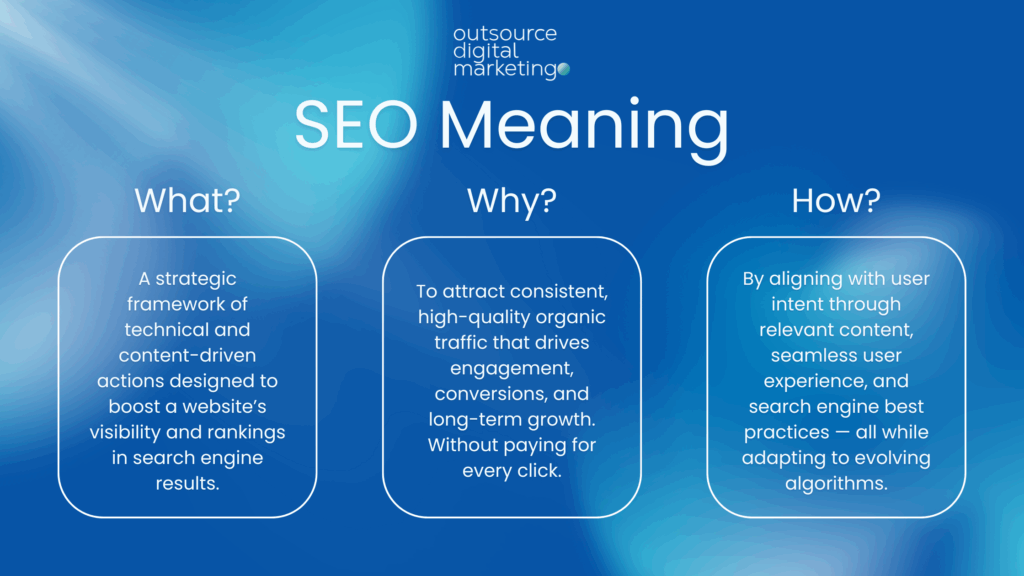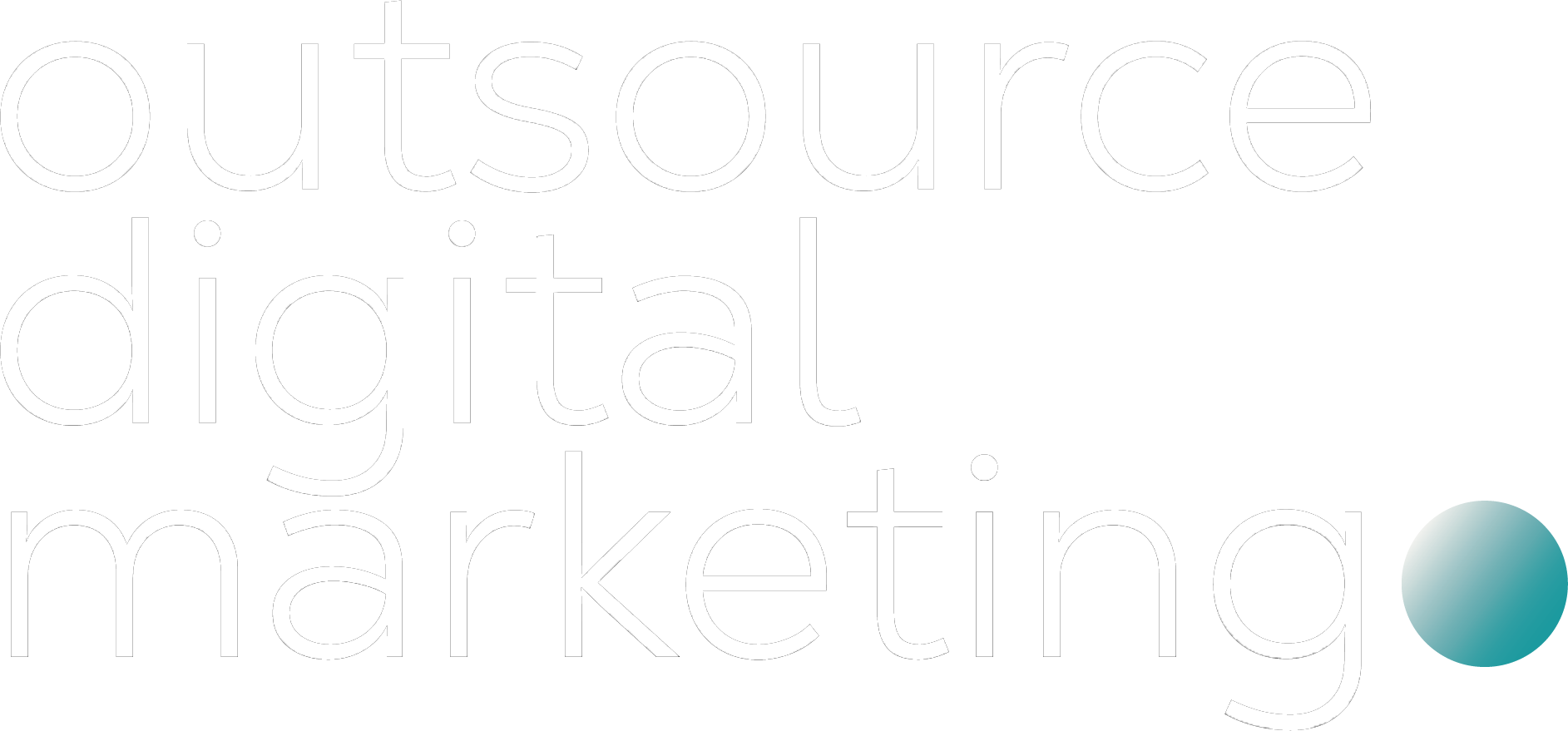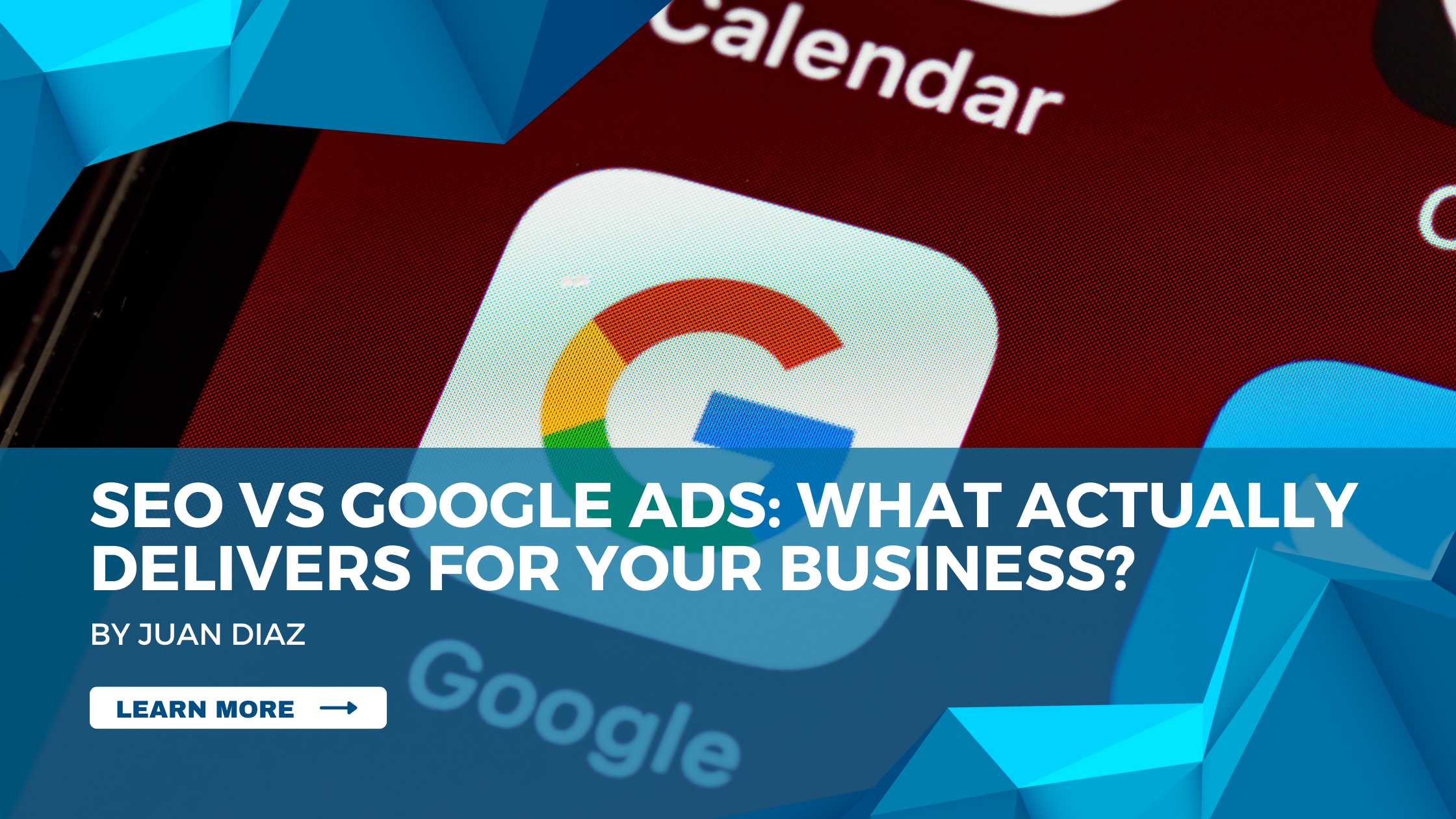By Juan Diaz
Let’s be real: the SEO vs. Google Ads debate isn’t about which is better. It’s about which one delivers — faster, smarter, and more profitably.
If you’re trying to grow your business, your time and budget are limited. You need to know where to invest. This guide isn’t here to sell you fluffy pros-and-cons lists. It’s here to help you decide which channel actually works for your business goals.
Let’s break it down.
SEO: The Long Game That Compounds
SEO, or search engine optimisation, is about building authority and owning space online without paying for every single click. Is the process of improving the organic presence of a website in search engines such as Google, Yahoo, and Bing.
It’s slower. But it pays dividends over time.
So what exactly do you optimize?
The website’s content, technical structure, and user experience (UX). Optimisation also involves earning and building quality links from relevant, high-authority websites.
Think of SEO like planting an orchard. You won’t see fruit tomorrow. But in six months? You might never need to buy apples again.
According to Rand Fishkin:
“Building a content practice over months and years, then benefiting from your experience, your back catalogue, and the habit of creation is a beautiful thing.”

Use SEO when:
- You want long-term, sustainable traffic
- You’re building a content hub or thought leadership
- Your products/services have steady demand
The upsides:
- No cost per click
- Builds trust and credibility
- Results last longer
- Great for long-tail discovery and top-of-funnel traffic
The limitations:
- Slow to show results
- Needs ongoing updates and content
- Heavily influenced by algorithm changes
By practicing SEO, you can improve the visibility and rankings of your site’s web pages in organic search engine results pages (SERPs).
When effective, you grow unpaid traffic, engagement, conversions, and sales as more online searchers discover and visit your site.
Google Ads: Quick Hits and Laser Focus
Google Ads is performance-first. You can use it to help drive sales, leads, site traffic, and engagement by getting your business in front of people via paid ads. You bid, your ad shows up, and traffic starts rolling in. Need leads this week? Launch a campaign today.
You can choose from many ad options to suit your business and goals. The Google Ads ecosystem includes:
- Google Search
- Google Shopping
- Google Display Network
- YouTube Advertising
Plus, there are several Google Ad types to consider.
As Sam Yadegar, CEO of HawkSEM, puts it:
“When organic competition is extremely fierce and dominated by large brands, Google Ads is a more effective way to garner new leads and sales.”
Use it when:
- You’re testing a product or promotion
- You’re targeting bottom-of-funnel (BOFU) keywords
- You need immediate traction or sales
Ads get you to the top of the SERP without months of blog posts or backlinks. But the second you stop paying? The clicks stop too.
The upsides:
- Fast results
- Budget control
- Granular targeting (location, devices, behaviours)
- Direct data attribution (you know where the sale came from)
The limitations:
- Ongoing cost (pay to play)
- Higher CPCs in competitive markets
- Can burn cash if not optimised properly
So, Which One Should You Pick?
This is where most businesses get stuck. But here’s the truth:
“The highest performing digital marketing campaigns use a healthy mix of both.”
You don’t need to choose one over the other. You need to decide when and how to use each.
Start with Google Ads if:
- You need leads fast
- You’re testing offers
- You’re launching something new
Start with SEO if:
- You have the time to invest
- You want to reduce cost-per-acquisition long-term
- Your keywords are too expensive to bid on
Do both if:
- You want to own the SERP (ad + organic = double exposure)
- You want to test keywords with ads before investing in content
- You’re running a time-sensitive campaign, but want evergreen results too
In a survey of 496 business owners and marketing pros on the use of Google Ads and SEO, 90% of respondents said Google Ads is effective. 87% highlighted SEO’s effectiveness.
But when asked to choose only one tactic, 64% of respondents said they’d pick Google Ads. 36% would opt for SEO.
Before deciding between SEO and PPC, consider the following:
- Your goal: If you want to drive traffic for a promotion or kickstart a product launch, PPC is the way to go. For steady, long-term growth, turn to SEO.
- Your performance: If you already have a strong search presence (thanks to solid SEO efforts), PPC could consolidate that with additional visibility
- Your margins: Some keywords cost more to target with ads than others. If costs are high, it might not make sense to invest in PPC if your profit margin isn’t ideal. SEO may drive stronger returns, so estimate your CPCs.
- Your customer values: With PPC, you can find that higher customer lifetime values account for higher click costs. Lower values may mean SEO is a better option.
When Should You Invest in Both SEO and Google Ads?
Let’s not overcomplicate it: if you want to own your market, you need to show up everywhere that matters.
Running SEO and Google Ads isn’t about spending more — it’s about being smarter with your budget. If you’re in a competitive space or running a seasonal campaign, doubling down on both channels gives you full SERP coverage and reduces your reliance on any single tactic.
Use Google Ads to drive traffic when timing is critical — think product launches, flash sales, or peak seasons. Meanwhile, let SEO do the heavy lifting in the background, building long-term visibility and keeping your brand top-of-mind 24/7.
Bottom line? If your goal is growth, not guesswork, use both. It’s how high-performing brands stay visible — and stay ahead.
Making Them Work Together
If your strategy doesn’t combine SEO and Google Ads, you’re leaving money on the table.
Here’s how smart brands merge both:
- Use Google Ads data to identify keywords that convert
- Write SEO content around those high-intent terms
- Retarget visitors who engaged with SEO content using display or YouTube ads
- Use ad copy testing to inform meta descriptions and page headlines
SEO feeds your long-term visibility. Ads supercharge your short-term goals. Together? You’re playing both offence and defence.
The Final Word
SEO is your long game. Google Ads is your fast lane. One builds presence. The other builds momentum.
“In my experience, the brands that truly scale aren’t choosing between SEO or Google Ads. They’re building systems where both work in sync. Paid search gives them control and speed. Organic search gives them authority and staying power. The smartest strategies aren’t siloed — they’re integrated.”
Juan Diaz, International Marketing Expert
You don’t have to choose sides — you have to choose timing. Invest in what moves the needle now, and layer in what will sustain your growth long-term.
If you’re ready to stop guessing and start growing, we can help. Let’s build a digital strategy that works when you launch and when you scale.
Contact the OSDM team today — and let’s make it happen.

